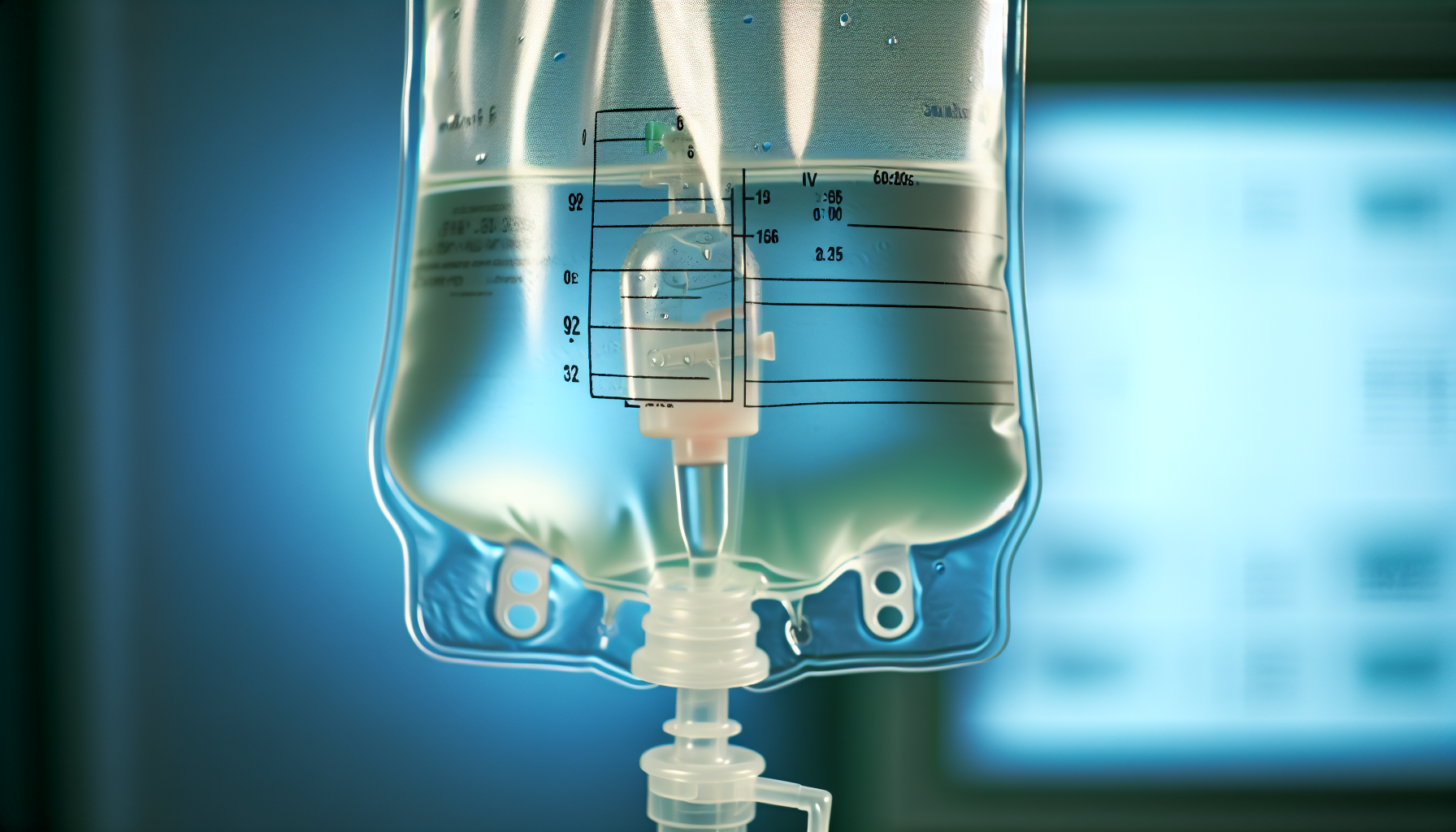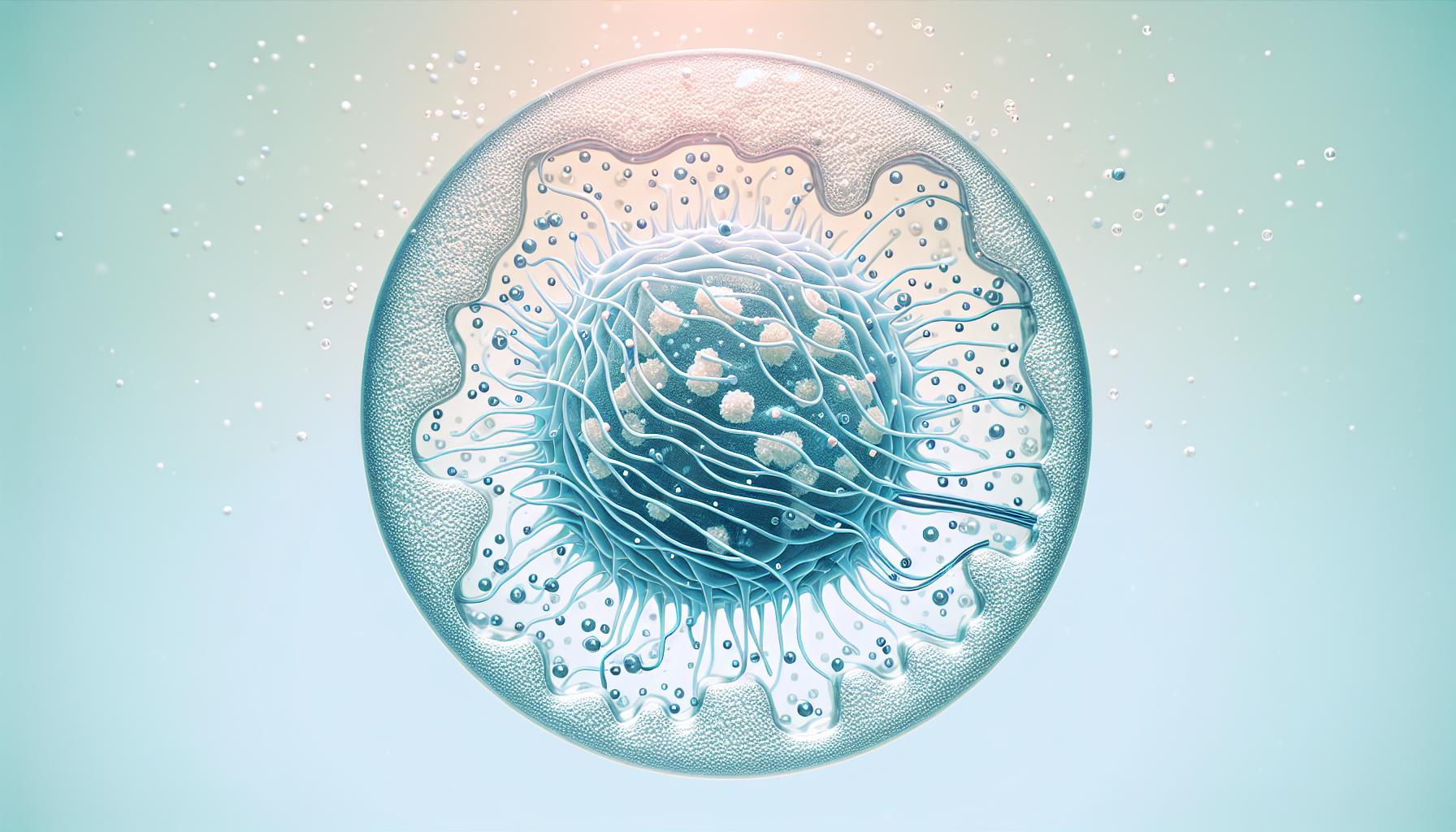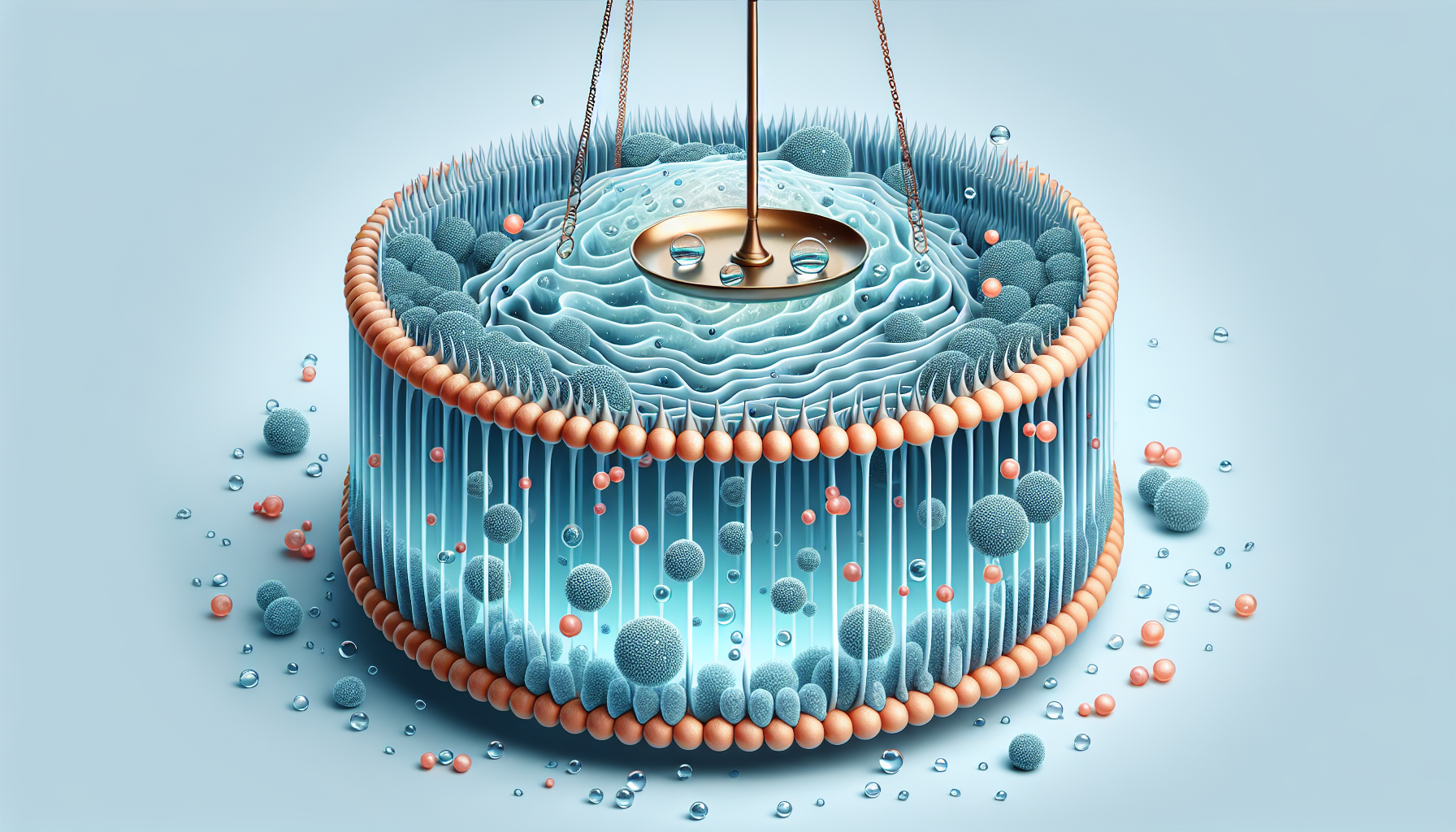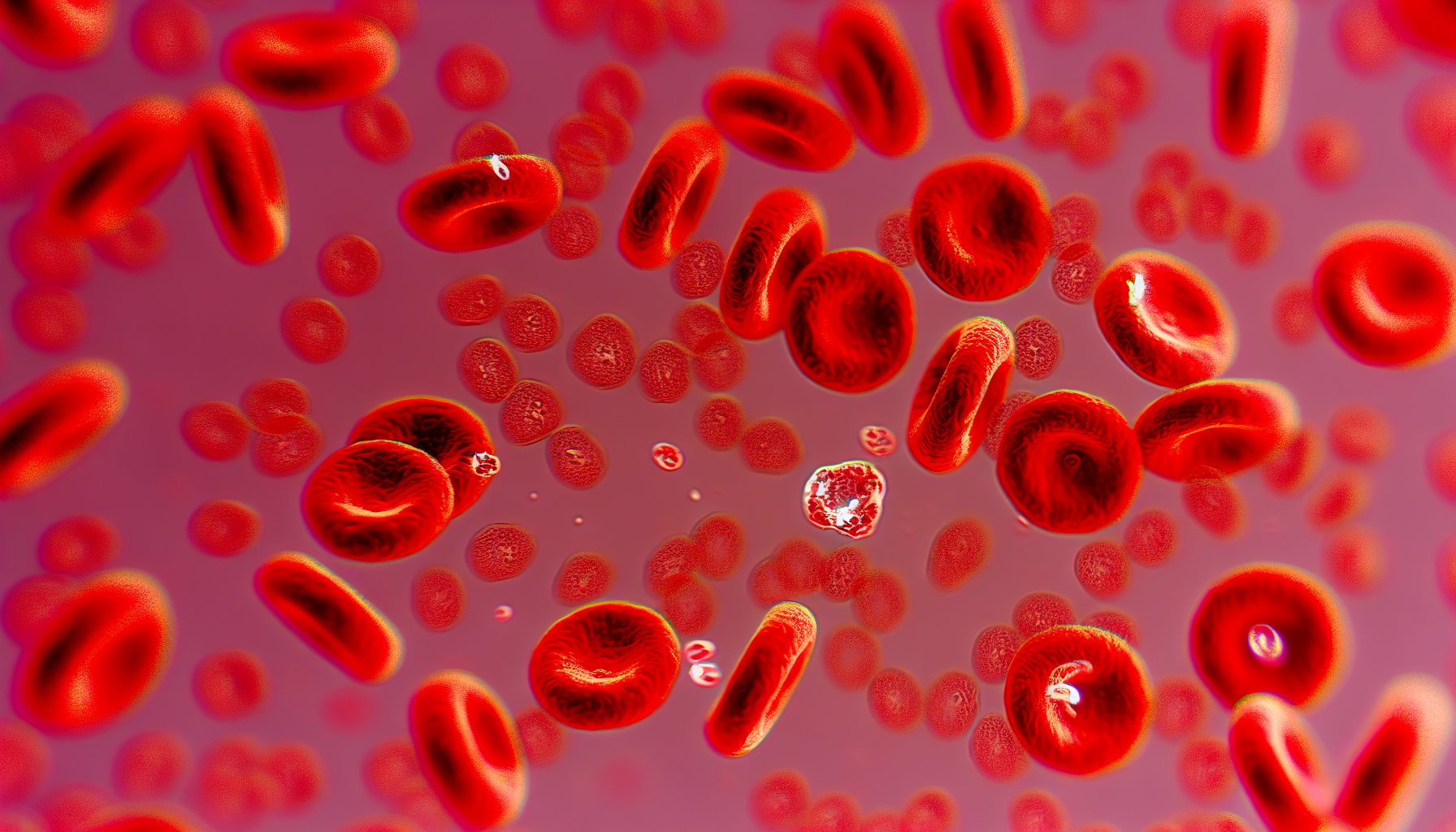Understanding isotonic solutions is key to grasping cellular functionality and their critical role in healthcare. An isotonic solution maintains fluid balance within cells, identical in solute concentration to cytoplasm, which is pivotal for cell health.
Their application spans from medical IV fluids to everyday hydration products. Read on to learn how isotonic solutions sustain life at the cellular level and in clinical practice.
Key Takeaways
- Isotonic solutions have equal solute concentrations to those found within cells, preventing any net movement of water and thereby maintaining cell size and function—a state vital for biological processes and medical applications.
- Different tonicity solutions like hypertonic (higher solute concentration compared to the cell) and hypotonic (lower solute concentration) adversely affect cells by causing them to shrink or swell, respectively, unlike isotonic solutions which maintain cellular equilibrium.
- Isotonic solutions are widely used in medical and laboratory settings to hydrate patients, support electrolyte balance, facilitate wound care, and maintain the physiological environment of cells in culture, due to their balanced osmolarity with bodily fluids.
- Isotonix Innovation: Isotonix is a brand that has taken the supplement industry by storm with its advanced nutritional delivery system. Their supplements, when mixed with the correct amount of water, become isotonic, ensuring they're primed for optimal nutrient absorption and efficiency. This unique feature sets Isotonix apart, offering a more effective way for the body to receive the vitamins and minerals it needs.
Exploring Isotonic Solutions: A Balanced State

Isotonic solutions are the unsung heroes of biology. Defined as solutions that possess an equivalent concentration of water and solutes as the cell cytoplasm, they are similar to the external solution surrounding the cell.
The magic of isotonic solutions lies in maintaining an equal osmolarity or solute concentration as another solution, resulting in no net movement of water.
This equilibrium is vital for the correct functioning of cells and preservation of their shape.
The Science Behind Isotonicity
How do isotonic solutions achieve this balancing act? The science behind isotonicity lies in solute concentration.
When the solute concentration outside the cell is equivalent to the solute concentration inside the cell, and the solute particles are unable to pass through the cell membrane, the solution is considered isotonic to the cell.
In an isotonic environment, cell membranes experience no net water movement, leading to no change in cell size. This allows cells to maintain their normal shape and function.
Isotonic Solutions in Medical Settings

Isotonic solutions’ ability to maintain balance is vital in medical scenarios. They are used in intravenous (IV) fluids due to their similarity in concentration of dissolved particles as blood.
These solutions assist in rehydrating patients, compensating for fluid loss during surgeries, and combating dehydration.
In wound care, isotonic solutions, like normal sterile saline, are used as cleansing solutions. They aid in achieving wound hydration, removing debris, and fostering wound healing without impeding the wound healing process.
Everyday Examples of Isotonicity
Isotonicity isn’t reserved for the medical world. Everyday examples of isotonicity include sports drinks like Lucozade Sport, Powerade, and Gatorade.
These drinks maintain isotonicity by containing significant amounts of carbohydrates and electrolytes, aiding in the process of rehydration and restoring depleted nutrients during physical activity.
Saline solution for contact lenses is another example, achieved through the presence of equimolar concentration of sodium and chloride, making it compatible with the body’s natural tears.
The Osmosis Phenomenon and Isotonic Solutions

Osmosis, characterized by the net water movement across a semipermeable membrane from a region of lower solute concentration to one of higher concentration, has a significant role in the functionality of isotonic solutions.
Osmotic pressure, the pressure needed to prevent water from diffusing across a membrane through osmosis, regulates the movement of water from an area of lower concentration to an area of higher concentration.
Understanding Osmotic Pressure
Osmotic pressure is the force that drives water movement between solutions with different solute concentrations. It is the minimum pressure required to stop the pure solvent from flowing into a solution through a semipermeable membrane.
In isotonic solutions, osmotic pressure remains equal both inside and outside the cells.
Osmosis in Action
On a molecular level, osmosis is the process by which water molecules diffuse across a semipermeable membrane from a region of lower concentration solution to a region of higher concentration solution, facilitating the movement of water into and out of cells.
The rate of osmosis is primarily determined by the solute concentration. Other factors such as temperature, particle size, and the size of the concentration gradient also play a role.
Impact on Cells
The impact of osmosis on cells depends on the tonicity of the surrounding solution. In an isotonic solution, water continues to flow, but it does so at equal rates into and out of the cell, resulting in no net movement of water through osmosis.
This is instrumental in preserving the size and functionality of the cells.
The Role of Isotonic Solutions in Nutritional Supplementation
The incorporation of isotonic solutions into the realm of nutritional supplements, as exemplified by brands such as Isotonix, marks a significant advancement in the field of nutritional science.
Utilizing the principle of isotonicity, these supplements facilitate rapid and efficient nutrient absorption by the body, thereby promoting improved health outcomes and enhanced overall well-being.
Exploring the Efficacy of Isotonic Solutions for Optimal Nutrient Absorption
Nutrient absorption is a critical factor in the effectiveness of dietary supplements, and not all methods of delivery are equally beneficial.
Isotonic and Isotonix solutions are distinguished in the marketplace for their innovative approach to nutrient delivery, which can markedly improve the absorption process.
Isotonic Solutions: A Closer Look
Isotonic solutions are pivotal in both biological and healthcare settings. They possess a solute concentration that is equivalent to that of cell cytoplasm, playing a vital role in maintaining cellular health and facilitating the swift uptake of nutrients and fluids.
These solutions are employed in a variety of contexts, ranging from intravenous medical fluids to sports hydration products.
EXCLUSIVE INSIGHTS INTO ISOTONIC SOLUTIONS:
- Balanced Pressure: Isotonic solutions are in osmotic equilibrium with the body's fluids, enabling a seamless transition of substances across cell membranes.
- Rapid Absorption: The body can absorb these solutions quickly, obviating the need for the digestive process.
- Hydration and Recovery: Frequently found in sports drinks, isotonic solutions replenish fluids and electrolytes depleted during strenuous physical activities.
- Digestive Ease: They are particularly advantageous for individuals with sensitive digestive systems or gastrointestinal conditions.
- Consistent Nutrient Delivery: The osmotic balance maintained by isotonic solutions ensures stable energy levels and efficient nutrient utilization.
Comparing Tonicities: Hypertonic vs. Hypotonic vs. Isotonic
To further appreciate the importance of isotonic solutions, let’s compare them to their counterparts - hypertonic and hypotonic solutions. Hypertonic solutions are characterized by having a higher concentration of solutes in comparison to the cell.
On the other hand, hypotonic solutions have a lower solute concentration outside the cell than inside the cell.
When Water Moves: Hypertonic Solutions
In a hypertonic solution, the cell will release water due to the higher solute concentration outside the cell compared to inside the cell. This causes the cell to shrink and may disrupt its cellular processes.
The Swelling Effect: Hypotonic Solutions
Conversely, in a hypotonic solution, the influx of water into the cell leads to its enlargement or swelling. Prolonged exposure to a hypotonic solution can result in the cell swelling and ultimately rupturing or lysing due to osmotic water movement.
The Equilibrium of Isotonic Solutions

On the other hand, when a cell is placed in an isotonic solution, there is no net movement of water, and the same solute concentration is maintained both inside and outside the cell, thus maintaining cell size and function. Such balance is crucial for the efficient delivery of nutrients to the cells.
Practical Applications of Isotonic Solutions
Isotonic solutions have various practical applications in healthcare and laboratory settings. In healthcare, they can be used for:
- Delivering hydration and electrolytes similar to blood
- Aiding in the maintenance of electrolyte balance
- Minimizing the risk of hyponatremia
- Preventing excessive urine output
- Rehydrating patients
- Supporting fluid loss during surgery
- Addressing dehydration
- Raising blood pressure in patients with fluid volume deficits.
Isotonic Solutions in Healthcare
Isotonic solutions used in healthcare include intravenous fluids, wound care, and eye care. They are infused into a patient’s bloodstream without causing any alteration to their blood composition.
Additionally, they are used to address conditions such as vomiting, diarrhea, shock, metabolic acidosis, and fluid loss.
Laboratory Techniques and Isotonicity
In the laboratory, isotonic solutions are used in:
- Microdialysis, where an isotonic solution is employed to immerse the inner surface of a dialysis membrane
- Cell culture, where isotonic solutions are utilized to match the concentration of water and solutes found in the cell cytoplasm, thereby preventing the cell from undergoing swelling or shrinking
- Protoplast isolation
These solutions are important for maintaining the proper environment for these laboratory techniques.
The Physiology of Fluid Balance
The body is a complex system that relies on the balance of fluids for its proper functioning. This balance is maintained by the physiological processes of osmosis and isotonic regulation.
Osmosis is the process of water diffusion through a membrane in response to osmotic pressure generated by an uneven distribution of molecules on both sides of the membrane.
Isotonic regulation is the maintenance of balanced solute and water concentrations across the cell membrane, preventing the net movement of water and thereby contributing to fluid balance by preserving constant cellular water volume.
Homeostasis and Body Fluids
Maintaining the balance of body fluids heavily relies on homeostasis. It involves maintaining stability in the osmolality and volume of body fluids through neural and endocrine mechanisms.
In this process, isotonic solutions are crucial as they prevent any net water molecule movement into or out of the cell.
Kidney Function and Isotonic Regulation
The kidneys are the unsung heroes in maintaining fluid balance in the body. They:
- Maintain the body’s fluid and electrolyte balance
- Consistently filter the blood
- Regulate the excretion and re-absorption of water and electrolytes
- Perform a critical process for maintaining a steady extracellular fluid volume and composition.
Isotonic Solutions and Cellular Health
By protecting red blood cells and enhancing cell longevity, isotonic solutions contribute significantly to cellular health. When a red blood cell is placed in an isotonic solution, there is an absence of net water movement across the cell membrane due to equal solute concentrations inside and outside the cell.
This equilibrium in water movement aids in preserving the cell’s typical structure and function, thus safeguarding the red blood cells and promoting overall cellular well-being.
Protecting Red Blood Cells

Red blood cells are crucial for delivering oxygen to our body’s tissues. These solutions are crucial in safeguarding these cells by creating an environment that mirrors their internal solute concentration, thereby permitting them to function normally without any disruption.
Isotonic Solutions and Cell Longevity
Beyond just red blood cells, isotonic solutions are vital in promoting the longevity of all types of cells. By creating a balanced environment, they prevent the cells from swelling or shrinking, thereby ensuring their optimal function and longevity.
Summary
In conclusion, isotonic solutions are vital for maintaining a balanced state in our bodies, from the cellular level to the whole organism. They protect our cells, help our kidneys balance our body fluids, and have practical applications in healthcare and laboratory settings.
So, next time you see a saline drip or reach for a sports drink, remember the power of isotonic solutions!
Frequently Asked Questions
What are isotonic solutions give an example?
Isotonic solutions have the same osmotic pressure, and an example is 0.9% Normal Saline, which is frequently used for fluid replacement.
What is an example of an isotonic process?
An example of an isotonic process is when blood serum is isotonic to a physiologic salt solution, meaning there is no net flow of water across the cell membrane.
What is isotonic and hypotonic solution?
An isotonic solution has equal osmotic pressure, while a hypotonic solution has lower osmotic pressure. In an isotonic solution, there is no net flow of water into or out of the cell, maintaining the cell's volume.
What is a hypertonic solution?
A hypertonic solution has a higher solute concentration than another solution, causing water to flow into it. This can lead to dehydration and cell shrinkage due to the movement of water out of the cell.
What is the role of isotonic solutions in healthcare?
Isotonic solutions play a crucial role in healthcare by being infused into a patient's bloodstream without altering their blood composition and addressing various conditions such as vomiting, diarrhea, shock, and fluid loss.
Other Articles of Interest:










